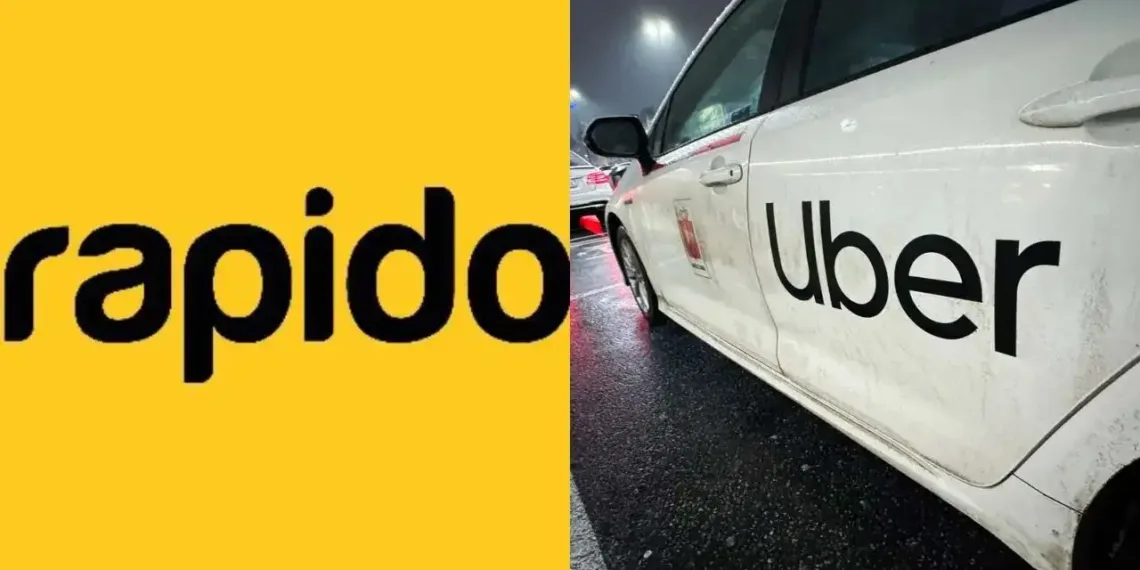India’s ride-hailing landscape is witnessing a seismic shift as Rapido, the Bangalore-based motorcycle taxi startup, has emerged as Uber’s primary competitor, effectively replacing Ola in the competitive hierarchy. This transformation highlights how innovative business models and strategic focus can disrupt established market dynamics.
Rapido has upended the local transportation sector with its inexpensive motorcycle taxis and unique pricing model, racking up more downloads last year than Uber and fellow Indian rival Ola, signaling a fundamental change in consumer preferences and market positioning.
Table of Contents
Rapido Numbers Tell the Story
Rapido’s impressive market penetration demonstrates why industry leaders are taking notice of this disruptive force in India’s transportation sector.

| Market Segment | Rapido’s Share | Key Advantage | Growth Rate |
|---|---|---|---|
| Bike Taxis | 56-61% | Dominant leader | Rapid expansion |
| Auto-Rickshaws | 33% | Growing presence | Steady growth |
| Cab Services | 18% | Emerging player | Accelerating |
| Overall Downloads | Leading position | Beat Uber & Ola in 2024 | Market leader |
What Makes Rapido Different?
Unlike Ola and Uber, Rapido charges drivers a fixed fee for accessing the platform, eliminating per-trip commissions. This revolutionary approach offers several advantages:
Driver Economics: Drivers can earn up to 15% more per trip on Rapido compared to Ola or Uber, making it an attractive platform for service providers seeking better income opportunities.
Pricing Strategy: The fixed-fee model translates to more affordable rides for consumers while ensuring predictable earnings for drivers – a win-win proposition that’s reshaping market expectations.
Platform Accessibility: By focusing on two-wheelers and three-wheelers, Rapido taps into India’s preference for quick, cost-effective transportation solutions.
The Strategic Business Implications
For technology startups analyzing this market shift, Rapido’s success demonstrates several key principles:
Localization Matters: Understanding India’s unique transportation needs – from traffic congestion to cost sensitivity – proved crucial for market penetration.
Business Model Innovation: The commission-free approach challenges traditional platform economics, proving that alternative monetization strategies can drive competitive advantage.
Profitability Focus: The startup has now achieved profitability for the first time, demonstrating sustainable growth beyond just market share acquisition.
Impact on Established Players
This competitive landscape shift forces both Uber and Ola to reconsider their strategies in the world’s largest ride-hailing market. Uber CEO Dara Khosrowshahi has termed India as one of the toughest markets to crack, and Rapido’s rise validates this assessment.
The emergence of a new primary competitor means established players must innovate rapidly or risk further market share erosion. This dynamic benefits consumers through increased competition and service improvements.

Broader Market Trends
Rapido’s success reflects broader trends in India’s digital economy:
Local Innovation: Indian startups increasingly challenge global giants by understanding local market nuances better.
Sustainable Business Models: The focus on profitability over pure growth represents a maturing startup ecosystem.
Technology Adoption: Mobile-first approaches continue driving adoption across India’s diverse demographic landscape.
Future Outlook
As competition intensifies, expect continued innovation in pricing models, service offerings, and technology integration. The battle for India’s ride-hailing market is far from over, with each player bringing unique strengths to capture consumer loyalty.
For business analysts tracking this space, Rapido’s rise demonstrates how focused execution and market-specific strategies can challenge even the most established global platforms.
Investment and Industry Implications
This competitive shift signals opportunities for investors interested in India’s transportation technology sector. The success of alternative business models opens doors for further innovation and market disruption.
Traditional metrics like total addressable market and customer acquisition costs are being redefined as platforms experiment with novel approaches to driver and rider engagement.
For more insights into India’s evolving startup ecosystem, visit the official Rapido website to understand their platform approach
FAQs
Q: How did Rapido become Uber’s primary rival in India, replacing Ola?
A: Rapido achieved this position through its unique commission-free business model, focus on motorcycle taxis, and aggressive expansion. The company recorded more downloads than both Uber and Ola in 2024 while achieving profitability, demonstrating sustainable growth that outpaced traditional competitors.
Q: What is Rapido’s market share compared to Uber and Ola in India?
A: Rapido dominates the bike-taxi segment with 56-61% market share and holds 33% of the auto-rickshaw market. While still growing in cab services (18% share), the company’s overall download numbers and user engagement have surpassed both Uber and Ola, making it the primary challenger to Uber’s India ambitions.








